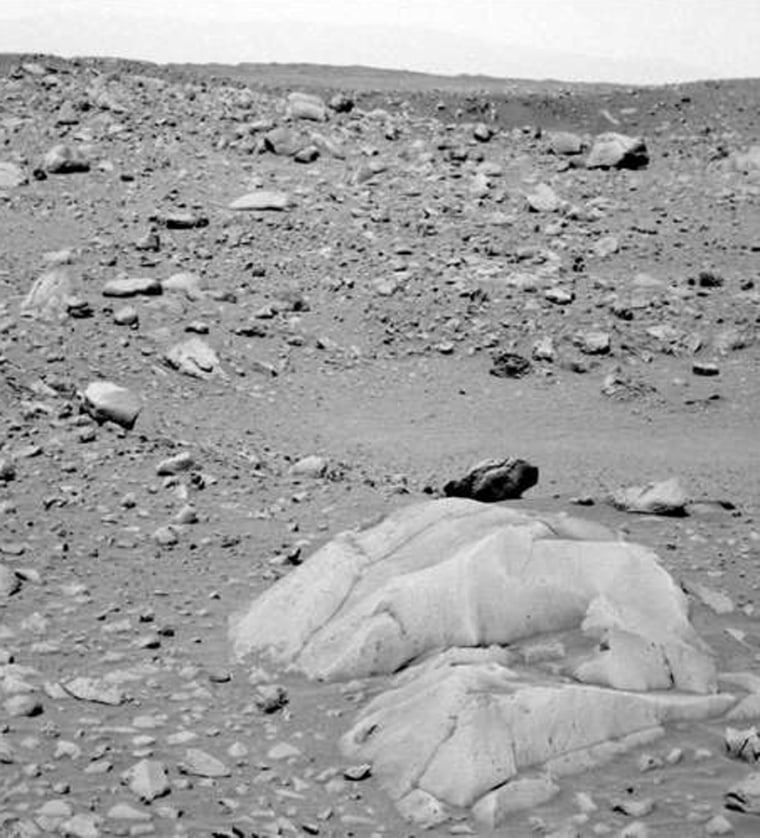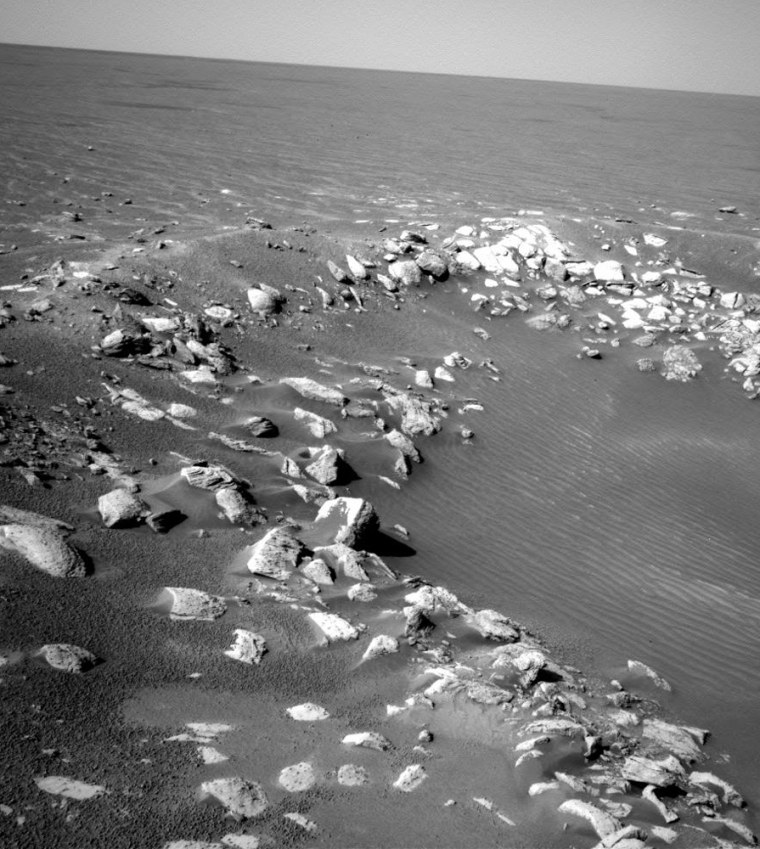NASA's twin Mars rovers pulled up to the rims of separate craters on Monday as they continue to explore opposite sides of the Red Planet.
Both stops were intended as intermediate pauses on longer journeys undertaken by both Spirit and Opportunity, said Cornell University astronomer Steve Squyres, the mission's main scientist.
Spirit arrived at Missoula Crater, a 330-foot-wide (100-meter-wide) depression, as it continues to roll eastward toward a cluster of low-slung hills. Spirit was to snap a panorama of the crater on Tuesday before continuing on its trek in Gusev Crater to the Columbia Hills.

Halfway around Mars, Opportunity reached a crater of its own, this one just one-tenth the diameter. Initial images of the shallow bowl nicknamed Fram Crater show jumbled blocks of rock outcrop, Squyres said.
Mission members are steering Opportunity toward Endurance Crater, which is 500 feet (150 meters) in diameter. It lies roughly 700 feet (215 meters) and about a week's drive beyond Fram Crater.
In recent days, Opportunity's cameras have begun to reveal details of the larger crater's rocky lip, including a stark white, 3-foot-high (1-meter-high) section of bedrock.
Scientists are eager for the rover to closely examine that band of rock, since it could expand on their understanding of the wet environment once found at the site, called Meridiani Planum.
Opportunity landed in a small, rock-rimmed crater. Subsequent analysis of the rock revealed it formed in water, perhaps a shallow sea, that could have been hospitable to life.
The rock outcrop at Endurance could be 30 or more feet high (10 meters high), implying it formed over a far longer period of time than did the curb-sized outcrop first spied at Opportunity's landing site within Eagle Crater, Squyres said.
Both rovers recently received new software in part to enable them to travel farther than before. Opportunity on Saturday rolled 462 feet (140.9 meters), setting a one-day distance record for the $835 million double mission.
